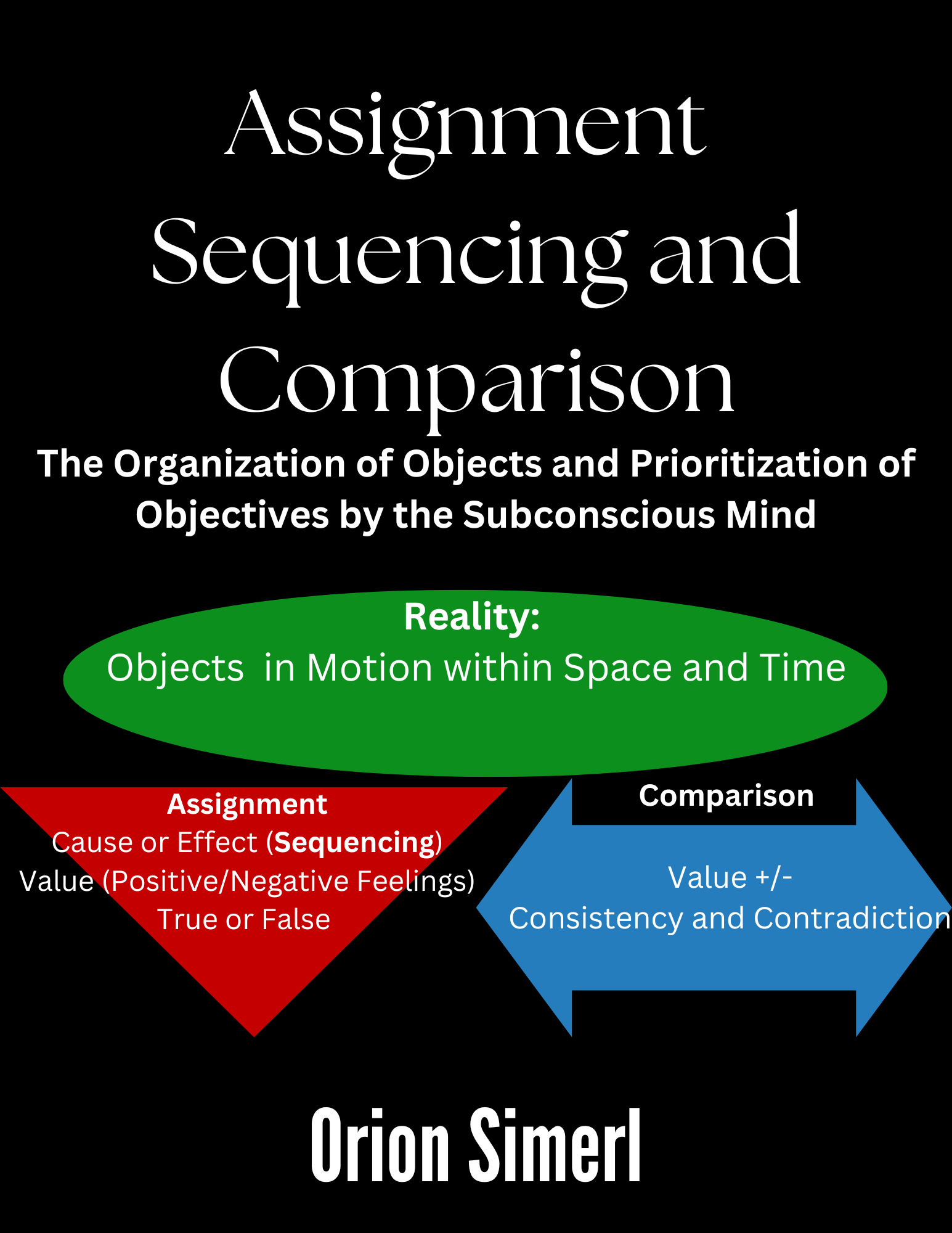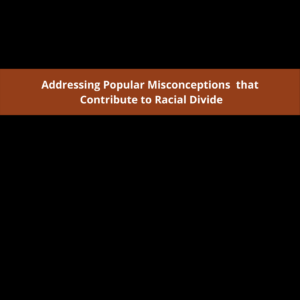Description
Reality consists of objects in motion within space and time and the feelings that motion produces. Motion is perceived through cause and effect sequencing, and value is assigned through experience. The mind organizes objects through assignments of cause and effect into sequences, and sequences become objects that can be sequenced with other objects. The previous sentence for example consists of words which are objects that consist of sequence, that are then sequenced with other objects:
Sequencing of letters identify the shape of the word.
Sequencing of symbol in the word represent the meaning of the object.
Then there may be several sequences pertaining to meaning, the general definition which consists of objects that describe the object (non-sequential sequencing explained later), and sequencing pertaining to the word sequenced with the other objects in the sentence producing context.
Outside of language, objects are organized the same way through assignments of cause and effect and instead of an object being defined through the symbols associated with its definition, it is understood through the familiar objects it consists of, and is assigned value based on the feelings it produces, or feelings produced through association with another object (idea), including being within the field of one’s attention during an impression where a positive or negative feeling was experienced.
The input of the mind is an individual’s perceived circumstances. Perception consists of a person’s organization of objects, and prioritization of value, all of which has some fluidity. Fluidity in the organization of objects due to uncertainty, and in prioritization of values there are circumstances that can lead to some values becoming more prioritized or less prioritized.
The output consists of comparisons to create motion by organizing objects to produce a positive feeling.
The mind can never be doing more than assignment, sequencing, and comparison, because there are not more ways to organize objects, and our perception of reality consists of objects and motion.
The difficulty for assignment, sequencing, and comparison is it can only be completely confirmed through personal experience, which isn’t to undermine the conclusiveness of the evidence. There were a number of factors that motivated its discovery, but chief among them was the need to understand denial, because I found myself in a situation where my material was avoided, ignored, and rejected without explanation. As a reformer this means I am trapped within circumstances that preclude the expression of my ambition, and understanding denial was the only way forward. A secondary motivator was to understand myself and my own behavior, to make desired changes. Although these efforts were underway long before I knew denial was a problem and how much of a problem I discovered it to be.
ASC is essentially the product of an obsession with the question why, and paying close attention to my thoughts, what they consisted of, and what they pertained to. Pertained to in the purposes the thoughts fulfilled. Secondly, being honest enough with myself to develop an understanding of my feelings based on the perception of the circumstances, what I understand, and what I value and do not value. Objectivity developed in part out of a desire to be honest with my daughter and give due weight to her thoughts and arguments, and then out of a desire to understand why I saw what I see in the world and why I was as I was.
I discovered the core mechanisms of ASC in 2019. Months of thinking and closely monitoring my psyche. Following motion. Something like hearing the word “devices” from a commercial, hearing the word produces a rap lyric in my head “ or gangbang to the rhythm when I spit it, I’m a kill em with the technical precision that’ll be fucking up all the devices”, and this lyric brings up a memory I had from a prior listening occasion. It’s goofy, but imagining the implications of the lyric in a literal effect produced a scenario where twista is rapping and people within some proximity experience failing devices and they’re upset. A childlike interpretation of something that produces hilarity. Something like this occurs during this period and I have to know why everything happened.
The word device entered my perception through my circumstances, my subconscious recognized the opportunity to produce a positive feeling by producing the thoughts (cause the lyric, effect the scenario) that supply the meaning of an idea that is valued based on experience. I spent a lot of time naturally experiencing the world around me and a lot of time understanding why it happened from the most simple happenings to those which were more complex. Not always immediately.
For example, during this period I was going to court for overblown charges in Florida for possession of marijuana, THC edibles, (3 counts) paraphernalia, and maintaining a public nuisance structure for drug activity. I was emotionally instigated by my attorney lying and misconduct at just about every court date, but there was a missing piece for awhile in understanding the nervousness and emotional unease I felt at every court date, and frequently asserting myself sometimes to the annoyance of the judge. Some of this unease is uncertainty stemming from my ignorance of procedure, some of it is my attorney injecting deception into the circumstances at every court date that I couldn’t anticipate, and some of it is frustration from the judge who isn’t giving me the opportunity to speak; but I am generally accepting of all outcomes. All outcomes but one. The emotional unease and fear impacting my performance stemmed from the possibility of experiencing a negative outcome because I didn’t say something. If the proceedings lead to the worst possible outcome but I was able to make my arguments that’s just what happened, I’ll assess those circumstances when I reach them and figure out how to proceed from that point. The problem would be if the proceedings concluded and had things I wanted to express that I didn’t. I didn’t understand this aspect of it until months after the case concluded.
Eventually I identified the core subconscious mechanisms responsible for the organization of information and the prioritization of objectives, which came through the realization that there were not more ways for the mind to organize objects in the pursuit of a positive feeling, and observing that all acts proceed from an effort to produce a positive feeling. Assignments of cause or effect in the defining objects and understanding of motion, assignments of value based on the feeling that an object produces, assignments of true and false based on conflicting sequences, and assignments of right or wrong influencing values as ideas tied to self worth. After assignment and sequencing everything else is comparisons to arrive at the highest net possible feeling.
Although in the last 5 years or so there have been developments, there isn’t much from the initially observed content that has changed fundamentally. The most significant change is recognizing non-moral standards as opposed to seeing them as competing values. Initially I recognized morality is determinative of behavior because violating moral rules reduces self worth through a person seeing themself as something they understand or believe to be wrong/bad. Non-moral standards operate the same way through self perception, and other value conflicts relate to the feelings directly produced between two objects. The distinction between moral and non-moral standards will be discussed later on.
Introspection was also a valuable tool, most valuable in understanding mechanisms of denial, but also other mechanisms of behavior that formed through different value structures. Being able to peer through the mind of different versions of yourself where there were values higher than the value of the truth, or where the utility of truth wasn’t understood which produces denial to protect your value structure, because so much of what we like and how we see ourselves is based on what we believe. Going back with the understanding I have now allows me to observe the mechanisms that produced the behavior. That’s one element, there are many others from periods where I was operating out of different understanding (sequencing of objects) and a different value structure. Truth as one’s highest value doesn’t mean always telling the truth, the value of the truth is in its utility to liberty, where deception is morally justified to prevent imposition or when some interest is served and the deception carries no meaningful imposition.
Leaning too heavily on introspection may be seen as projecting the idea that everyone thinks like I do. They do not, but the underlying mechanisms are the same. It’s just a different organization of objects and different prioritization of value. Every act begins with the perception of opportunity within circumstances, consisting of an inventory of accessible objects and the effects they can produce and assignments of value motivating the act based on the anticipated feelings the act will produce. Followed by comparisons, of energy, consequences (immediate objective versus anchoring objectives exposed to risk), and standards (immediate objective versus the loss of self worth). It isn’t difficult to deduce probable organization and prioritization of value based on circumstances, and to confirm based on a pattern of behavior.
I began to write assignment sequencing and comparison after noticing myself trying to ascertain the most efficient way to remove hooks from a retail board and thinking about how I’ve done this in the past (acted to increase efficiency). It was something like pulling the hooks off and collecting them in one hand versus putting them directly in the cart. I think passing them to my left hand was more efficient because it didn’t break the continuity of my motion. I may be wrong, it was significant in what it led to not in what it was.
I asked what I was doing? I was comparing two objectives. Where did the objective come from? I recognized that changing an effect in the sequence could impact output (another effect). I had identified a subconscious assignment of effect to two objects, the act of putting the hooks in the cart, and an effect of increased or decreased output (value to complete the task quicker), and this event led to me beginning to write a lot of what I’d been observing.
Since then I have created a decent amount of material on ASC, some I’ve submitted to journals and thus far, nobody has understood anything despite my efforts. No efforts have been made to understand it which has made articulating it that much more difficult because with questions I can understand what a person understands of the material, and then create bridges through the difference in what they understood and what is being stated. Without such feedback I don’t know what isn’t understood or where a disagreement may be.
To simplify, the following is the base mechanisms of ASC, real world application, and a challenge to IQ heredity featuring an exchange with someone who is knowledgeable of the research. There is additional material I may compile and publish at some point, but this book is intended as an introduction to the mind’s organization of objects and prioritization of objectives through Assignment Sequencing and Comparison.
Throughout the concepts portion I use common scenarios and stories to illustrate functions. It’s an effort to articulate function and mechanism, not an effort to explain specific behavior or happening.
The second part consists of 15 journal entries applying ASC to experiences. Demonstrating ASC through organically produced events. By organic I mean the events occurred through chance not beginning out of any effort to test hypotheses. Events that in retrospect represent easily observable mechanisms of ASC.
The third part discusses IQ heredity from the understanding of ASC and features an excerpt from a comment exchange from someone who appears to be familiar with the field and research, but also appears to be participating in bad faith to protect his value of the research. The premise of the controversy is there’s no way to separate heritable intelligence from heritable value. Some people will like things that lead to the development of intelligence, and others will not. IQ tests and twin studies tell us as much about heritable values that lead to the development of IQ as it tells us about heritable IQ.






Reviews
There are no reviews yet.